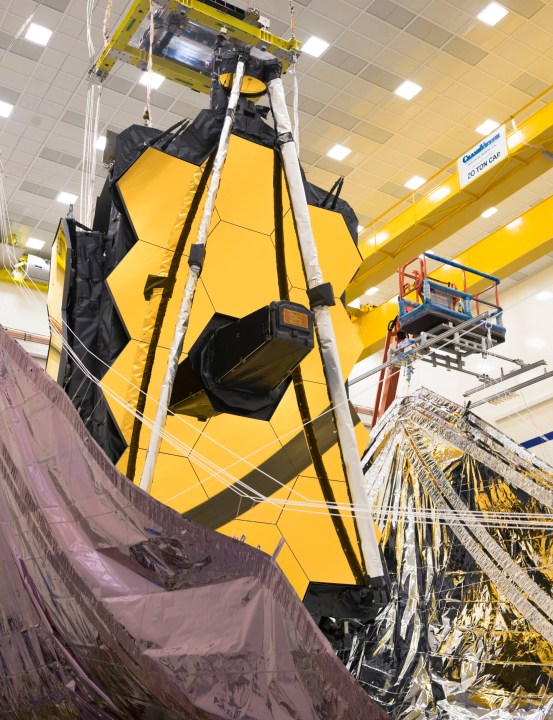
The massive sunshield of NASA’s upcoming James Webb Space Telescope has been folded away for the last time before its launch. The sunshield is the size of a tennis court and is one of the telescope’s more complex structures, along with the origami-style folding mirror.
The sunshield will protect the delicate components of the telescope from the sun’s rays, allowing it to pick up more faint infrared signals. Folding the sunshield is an involved process, as it requires packing the 70-foot by 47-foot sunshield into a small space in the 18-foot rocket.
“There is nothing really analogous to what we are trying to achieve with the folding up of a tennis court-sized sunshield, but it is similar to packing a parachute,” said Jeff Cheezum, a lead sunshield design engineer at Northrop Grumman, in a statement. “Just like a skydiver needs their parachute packed correctly in order to open perfectly and to successfully get back to Earth, Webb needs its sunshield to be perfectly stowed to ensure that it also opens up perfectly and maintains its shape, in order to successfully keep the telescope at its required operating temperature.”
The packing process takes a full month, as it needs to be laid flat but the shield has many curved surfaces. The layers are stacked in an accordion-like style and then secured in place.
“Think of it backwards; we want the deployed sunshield to achieve a specific shape so we get the performance we need. The whole folding process was designed with that in mind. We have to fold cleanly and carefully the same way each time, to ensure the unfolding occurs exactly the way we want it,” said James Cooper, lead sunshield engineer at NASA’s Goddard Space Flight Center in Greenbelt, Maryland.
To make sure everything is in the right place, the engineers use holes in the sunshield layers which line up exactly and are held in place by 107 pins. These hold everything in place during launch and will be released once the telescope is in space and is ready to unfurl its sunshield for real.
“It’s a very methodical process that we use to make sure everything is aligned correctly,” said Marc Roth, mechanical engineering lead at Northrop Grumman. “Our team has been through multiple training cycles, and we’ve implemented many lessons learned from the previous times we’ve done this process, all culminating in this last sunshield fold.”
The telescope is set to launch later this year.



